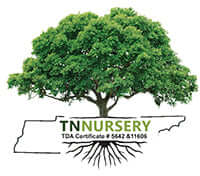
Landscaping with Evergreens: Creating Timeless Beauty
Share
Beauty Year Round With Evergreens
Evergreen landscape design is a perennially popular choice among gardeners and homeowners as it offers you year-round interest and form in the garden. There are various kinds of evergreens you can choose from, but for some spectacular, beautiful greenery, Green Velvet Boxwoods, Green Mountain Boxwoods, Wintergreen Boxwoods, and Green Giant Arborvitae are all great options. We'll cover the characteristics of these evergreens, their shapes and sizes, and the ways that you can mash them together to create beautiful landscapes that endure the seasons.
Green Velvet Boxwoods (Buxus 'Green Velvet')
Green Velvet Boxwoods (Buxus' Green Velvet') are landscape plants known for their deep green foliage and round habit. Evergreens are admired for their soft, velvety leaves that remain vibrant all year round. A rooted height of 2-3ft and similar spread make them a wonderful hedge or border plant or even a stand-alone specimen in beds. This is one of the most interesting qualities of Green Velvet Boxwoods because it is very flexible in its soil and lighting. They're easy to grow in full sun or partial shade and, therefore, versatile plants for any yard. Due to their dense habit, they're also good for privacy and as background plants for other garden elements.
Green Mountain Boxwoods (Buxus' Green Mountain')
Another great evergreen is Green Mountain Boxwoods, or Buxus' Green Mountain', which is upright, conical, and full of green leaves. They can be 5-6ft tall in the mature form and are less wide than Green Velvet Boxwoods. They're also a good option to build focal points or accent different areas of your garden. The pronounced pyramid shape of Green Mountain Boxwoods is a good match for topiary and formal gardens. They are also very tough and can handle heavy snowfalls, so they are a great option for areas with cold winters. Green Mountain Boxwoods grow just fine in full sun or part shade and can accommodate any landscape design.
Wintergreen Boxwoods (Buxus micropylar Wintergreen')
Wintergreen Boxwoods are adored for their tiny, smooth leaves that remain green all year round (a species known as Buxus microphylla 'Wintergreen'). These evergreens are a little more compact growing pattern than other boxwoods, at 2-3ft in height and width. This is one of the Wintergreen Boxwoods' main advantages as they are extremely cold tolerant and, therefore, are widely used in the North. They can also be grown on many soils and under different kinds of light, from full sun to partial shade. They are small and bushy plants, which makes them excellent for edging, foundation gardens, or border plants.
Green Giant Arborvitae (Thuja 'Green Giant')
Green Giant Arborvitae (Thuja' Green Giant') are not boxwoods but giant evergreen trees prized for speed and height. Fully grown, these arborvitaes can reach heights of 50-60 feet, and the pyramidal habit gives any landscape vertical interest. Green Giant Arborvitae: One of the best things about Green Giant Arborvitae is that they are easy to grow, and you can have privacy screens or windbreaks built fairly quickly. Their green foliage is feathery and fluffy, a nice contrast to other evergreen species. Green Giant Arborvitae likes to be in the sun and in moist soil.
Shapes and Heights Of Evergreen Shrubs
With so many different types and heights of these evergreens, the landscape design possibilities are endless. Strategically adding these types to your garden will help establish visual contrasts and focal points as the seasons change.
Small, Shrub-like Hedges and Borders: Green Velvet and Wintergreen Boxwoods make great small hedges and borders. They're evergreen, which guarantees year-round symmetry and grace.
Vertical Decorative Plants: Green Mountain Boxwoods, with their conical limbs, and Green Giant Arborvitae, with their pendulous growth, are great vertical accent plants. You can put them in as specimens to pull the eye up and dramatize your garden.
Topiary and Formal Gardening: Green Mountain Boxwoods can be felled into a geometric pattern, so they are great for topiary and formal gardens. Their growth pattern is so planned that you can sculpt and paint around it.
Layering for Depth in Landscaping
It's vital to landscape depth if you want to design visual, animated spaces. Evergreens in the layers are an effective way to add this dimension and create depth in your landscape.
Plants in the Foreground: Plants in the foreground must be very low growing evergreens such as Green Velvet Boxwoods or Wintergreen Boxwoods. They're foundational and beckon the eye.
Plant The Evergreen Boxwood For Mid-Level Interest
Plant Green Mountain Boxwoods or similar mid-sized evergreens behind the foreground plants to add dimension. The erect habit of Green Mountain Boxwoods is like vertical punctuation.
Green Giant Arborvitae or tall evergreens in the background for the extra wow factor. These offer dramatic foregrounds to add drama to the composition and scale up the scenery.
You layer these evergreens in the right places, creating a balance of heights, forms, and textures that change with the seasons. This creates a picturesque look and makes your garden inviting year-round.
Evergreen landscaping is a timeless and multipurpose way to transform your outside environment for the better. Green Velvet Boxwoods, Green Mountain Boxwoods, Wintergreen Boxwoods, Green Giant Arborvitae, and much more are some of the wonderful evergreens available to you. With attention to their size, heights, and placement in layering, you can develop landscapes with timeless character and life that reflect the best of nature year round.
